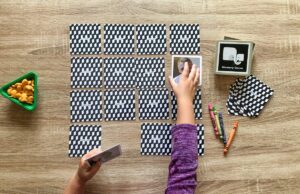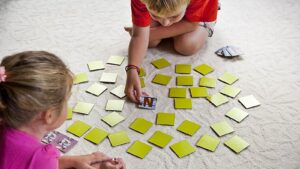Let’s take a look at some of the games and https://argoprep.com/blog/restorative-justice-in-schools/. An adult offers the child to memorize pairs of pictures within 10-15 seconds. Then the pictures are removed, and the child is asked to remember the paired pictures. For memorization, you can use both cards with drawings – concrete or abstract, with images of geometric shapes of different colors and shapes, as well as plot pictures.
Another game exercise: for a minute and a half, the child memorizes the toys on the shelf, then leaves the room or simply turns away, and the adult swaps or removes some of the toys. The child appreciates the changes.
This game is good in that its implementation can be varied. The objects of the game can be real toys or objects – at home or in kindergarten, and in the mobile version of the game (on a trip, in line at the clinic – in a word, in non-stationary conditions), objects can be replaced by their images made on cardboard cards .
Using cards and https://argoprep.com/blog/writing-prompts-by-grade-level-k-8/, you can also play in this version of memory development: an adult makes pairs of cards in advance from a color image of an object (and objects should be familiar to children, those that surround them daily) and its schematic image. Then he shows the child a pair (first a color, then a schematic image in each pair) – 3 seconds for each card. Then there are two options: cards with a schematic image are shown in order, and the child is invited to remember and name a paired object. Or vice versa: first show cards with a color image, and the child will remember and name the schematic images. In addition to memory, in the course of using cards with stylized graphic images, children develop associative imagination.
Next game. Take 12 colored cards and lay out any of them on the table in three rows. The child is invited to memorize the pictures, then close their eyes. An adult changes the arrangement of pictures or removes one or two pictures.
The child, having opened his eyes, must name what has changed or what has not become. Repeat this task three or four times. Then close all the pictures with a sheet of paper and offer to remember and name the pictures: in any one row from left to right or from right to left; in one of the columns from top to bottom or from bottom to top; name a picture that is in one of the corners, between any other pictures; at different levels relative to other pictures. To complicate the game, you can invite the child to be the leader himself and ask you difficult questions.
Several children can take part in the next game. Take 4 cards, each with a different shape. The leader in turn, for 10 seconds, shows the cards to the children. After showing each of the four cards, the children draw the rows of figures they saw on paper. For each correctly drawn card, the child receives 1 point. Whoever has the most points wins.
And another test game. She needs four sets of cards, two in each set, on which objects of the same type are drawn, arranged differently, with the addition of other objects. For example, cards with clothes: on the first – a hat, cap, panama; on the second, the hats are swapped and a dress is added. Show the child one of the memory cards, then remove it. Next, show a paired map and ask them to name which items have changed their location, which have disappeared, or which have been added. Additional tasks for this game: name the items on the card in one word; determine which item is superfluous, for example, in our example, a dress will be superfluous – it is not a headdress.